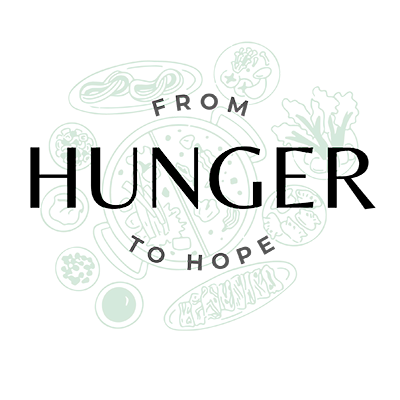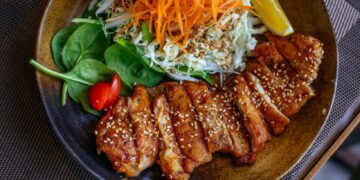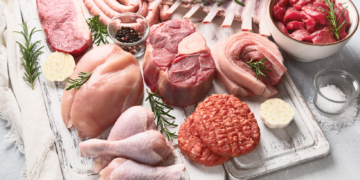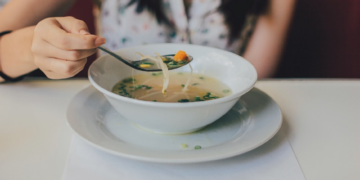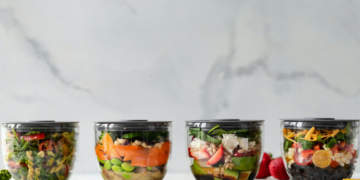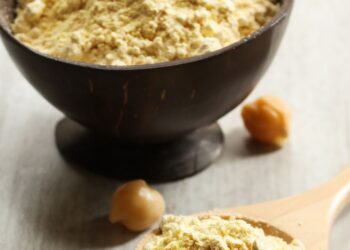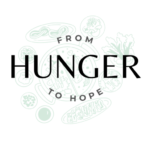Hot holding is the practice of keeping prepared, perishable food at temperatures of 140 degrees Fahrenheit (60 degrees Celsius) or above. This temperature range, known as the “danger zone”, is considered a dangerous and risky situation from a food safety perspective. Consuming food that has been held in this temperature range for more than two hours can lead to risk of illness or even death.
To ensure that temperature-critical foods (TCS foods) are safe for consumption, the United States Food and Drug Administration (FDA) requires that all TCS foods be kept above 140°F (60°C). This includes fish, poultry, cooked pasta, beef and beef products, cooked potatoes, and cooked rice among others. Keeping TCS food items at hot-holding temperatures will inhibit growth of potentially harmful bacteria such as Salmonella and E. coli as well as preventing spoilage from occurring. It also helps to maintain an acceptable flavor and texture to these types of foods when served.
Definition of TCS Foods
TCS foods are foods that require Time and Temperature Control for Safety (TCS). These are food items that require time and temperature control to keep bacteria levels low enough to maintain safety. TCS foods are also known as potentially hazardous foods and can include dairy products, meat, poultry, fish, shellfish and their derivatives, baked goods including pies, sandwiches and other cut fruits/vegetables that have been modified to be eaten without further cooking.
The hot holding temperature for TCS foods is always kept at a minimum of 135°F (57°C), as suggested by the United States Department of Agriculture’s (USDA) Food Safety and Inspection Service (FSIS). This is necessary to ensure that no harmful bacteria survive in the food items. Hot-held TCS foods must also be held at temperatures above 140°F (60°C) if they are placed into a heated holding area such as an oven or heated cabinet. Hotholding temperatures should not exceed 165°F (74°C) maximum for no more than two hours for any cooked product or potentially hazardous food item.
Hot Holding Temperature Requirements
Hot holding temperatures are important for food safety. Time/temperature control for safety (TCS) foods must be kept at an internal temperature of 135°F or higher to avoid the risk of foodborne illness when kept in hot holding. For proper hot holding, it is essential to understand the key requirements and processes in order to ensure TCS food is held at the correct temperature.
Hot and Cold Holding Temperatures
Having the proper hot and cold holding temperatures is essential to ensuring food safety. This guide provides information on hot and cold holding temperature requirements for both cooked and uncooked foods, as well as tips on how to safely hold them.
Hot Holding Temperature Requirements
When storing cooked food for an extended period of time, it should always be held at 140°F (60°C) or higher. Any food item that has been cooked must remain at 135°F (57°C) or higher in order to be considered safe to consume. It is important to monitor the internal temperatures of all hot-held items regularly throughout the day and discard any food that has not been above this temperature for a consecutive two-hour period due to the risk of bacterial growth.
Cold Holding Temperature Requirements
Any food product stored in a refrigerator should stay at 40°F (4°C) or lower in order to prevent any potential bacterial growth. Any food held colder than this temperature should be monitored with a thermometer periodically throughout the day and discarded if it is not below 40°F (4°C). Additionally, thawed products that are held in the refrigerator should not stay in there more than 24 hours before being consumed or refrozen within one hour after cooking in order to ensure its safety for later consumption.
Time/Temperature Control for Safety (TCS) Foods
In general, potentially hazardous food (time/temperature control for safety food, or TCS food) must be held at a temperature of 40°F (4°C) or below, or 140°F (60°C) or above to limit bacterial growth. TCS foods include dishes such as meat and poultry, fish, shellfish and dairy products. Hot holding temperature requirements are designed to help keep these perishable items safe from contamination.
For hot holding temperatures, any cooked foods should not be stored at temperatures between 41-140°F (4.4- 60°C). This range of temperatures is known as the “Danger Zone” because it is the ideal temperature for bacterial growth. If you’re hot holding foods for service in this range, it is important to monitor these temperatures frequently so that the items remain safe from microbial contamination.
To ensure that your hot held foods are safe for consumption, all cooked TCS foods should be held at an internal temperature of at least 140°F (60°C). Whenever possible use a probe thermometer to check the internal temperature of your food; this will give you the most reliable assessment of the item’s safety during hold time. Check thermometers regularly and replace when necessary; a broken thermometer can give an inaccurate reading and leave your products vulnerable to contamination.
Temperature Danger Zone
Foods in the Temperature Danger Zone for more than two hours should not be served. Ready-to-eat foods like deli meats, salads, and hot foods like chili can be kept in temperature at 140°F or above while they are being held and served. To keep your food safe, food in the Temperature Danger Zone must be continually monitored to make sure it is either cooled quickly or heated up quickly.
The danger zone refers to the temperature range between 41°F and 135°F (5°C—57°C), which is prime breeding grounds for microorganisms that cause spoilage of food. Hotter temperatures can kill these microorganisms, so if you are holding a TCS food for an extended period of time it should always be kept at or above 140°F (60°C). Water baths can also be used to maintain this temperature. If a prepared TCS food item has been left out at room temperature for more than two hours or has not been cooked to its proper minimum internal temperature as listed below, then it should not be consumed.
Minimum Internal Temperatures:
– Ground Meat: 155°F (68°C)
– Poultry: 165°F (74°C)
– Eggs dishes: 160 °F (71 °C)
– Fish/Seafood: 145 °F (63 °C)
Hot Holding Temperature Requirements for TCS Foods
Hot holding is an important food safety practice for all businesses that serve potentially hazardous food (TCS). Holding food at the correct temperature prevents bacteria from growing and keeps food safe for consumption. According to the FDA Food Code, food must be held at or above 135°F (57.2°C) or hotter to be considered safe for hot holding. In this article, we’ll assess the hot holding temperature requirements for TCS foods.
Food Storage and Hot Holding Temperatures
Cold TCS food must be held at 41°F or below, with no temperature abuse above 41°F. Hot TCS food must be held at 135°F or above, with no cold spots in the food below 135°F. Other common hot holding temperatures are kept between 135-155°F (depending on the product). You can find specific temperature details in your local and state regulations; some local health departments may have stricter requirements than government regulations and those should always be consulted first.
It is important to note that holding a hot food item longer than 4 hours without proper temperature action risks the safety of customers. Do not let precious time pass without taking steps to hold your TCS foods at the appropriate temperature; remember, bacteria love anywhere between 40-140 degrees Fahrenheit! Adequate thermal insulation technology, such as heat lamps, chafing dishes and protective covering, are all essential for safely holding a wide variety of TCS foods in pre-service and service areas.
When storing hot TCS foods in bulk or single service containers like pans or bowls, make sure to use an appropriate water bath that is maintained over 150°F during service hours. If reheating previously cooked items before serving them hot, reheat them rapidly and uniformly to 165 °F as measured by a thermometer prior to serving or holding them for service.
Hot Holding Temperature Requirements for Specific Foods
For hot holding food items, the safe minimum temperature as specified by the U.S. Food and Drug Administration (FDA) is 135°F (57°C). This ensures that all food items remain safe for consumption. It is important to note that different food products require different hot-holding temperatures in order to stay safe for consumption.
Below are the hot-holding temperatures recommended by the FDA for various foods:
-Cooked meat, poultry, eggs, and fish – 140°F (60°C) or above
-Soups and gravies – 165°F (74°C) or above
-Ready-to-eat meals – 140°F (60°C) or above
-Fresh fruits and vegetables – 135°F (57°C) or above
-Ground beef patties – 155°F (68oC) or above
